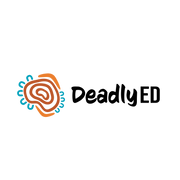The push for truth-telling in classrooms has become a point of urgency in First Nations education across the country – and rightly so. With this shift in focus, the Australian curriculum has made attempts to ensure that there are opportunities for educators to prioritise and include First Nations perspectives in their teaching and learning across all disciplines. Historically, the inclusion of First Nations histories, cultures and perspectives in the curriculum has been sparsely incorporated and quite frankly the approach has been largely tokenistic.
The notion of truth-telling re-emerged in national conversations with the release of the Uluru Statement From The Heart in 2017. The Uluru Statement deemed that truth-telling is a crucial part in the ongoing processes of healing and reconciliation in Australia, as an awareness of the lived-experiences and understanding of the varied traditions, cultures, languages and histories of First Nations peoples is still widely unknown by many. So, it would make sense that one of the greatest ways to make an impact on Australians, particularly young people, would be through our classrooms. For many educators, they’ve probably heard about this “truth-telling” – they might have a sound idea of what it means, they could be doing it with varied amounts of confidence on any given day, or they could be completely ambivalent to this important part of teaching and learning. And we get it. If First Nations education could be viewed on a scale of doing it, working towards it, or not doing it, we know that educators would find themselves plotted on different points of the spectrum. We know that all educators are at different points in their First Nations education journey. And we know that there are many teachers in our classrooms today who didn’t get to learn the other side of the Australian story.
There have been many First Nations people who have contributed to the formation of First Nations curriculum priorities, and many, many more who have worked to create and develop resources to teach it. Today, there are more First Nations books than ever on bookshelves, articles and informative posts on social media outlets, and digital content by First Nations creators is emerging almost daily. But we often hear that educators lack the confidence to use First Nations perspectives in their classroom for fear that they don’t know enough about a topic or that resources they’ve found may be inappropriate or wrong. There is some validity to this hesitation because there can be a lot of stuff out there that looks ‘Indigenous’ and like it may have been created or written by a First Nations person, but it hasn’t. Or there are a lot of learning materials still circulating that have become outdated, stale and largely ineffective and educators are unsure as to why these resources no longer serve a purpose.
As adult learners, we recognise that educators need to have agency over their own learning and take accountability of the ways in which they are embedding First Nations curriculum priorities. We also recognise that there can be a disconnect in the process between downloading resources from First Nations content creators and knowing how they’ve decided what makes a good resource. It’s easy to be told a certain text like a picture book is a great resource for truth-telling. But often a missing piece in this exchange is how or why it’s so good. To bridge this disconnect, we’ve created an easy to use and accessible checklist to help you work that out. This checklist will be a useful tool in your online searches for content and information about First Nations peoples, it will be useful in those book room cleanouts, and it will be useful when it comes to purchasing future resources and tools to build your First Nations library and resource bank.





